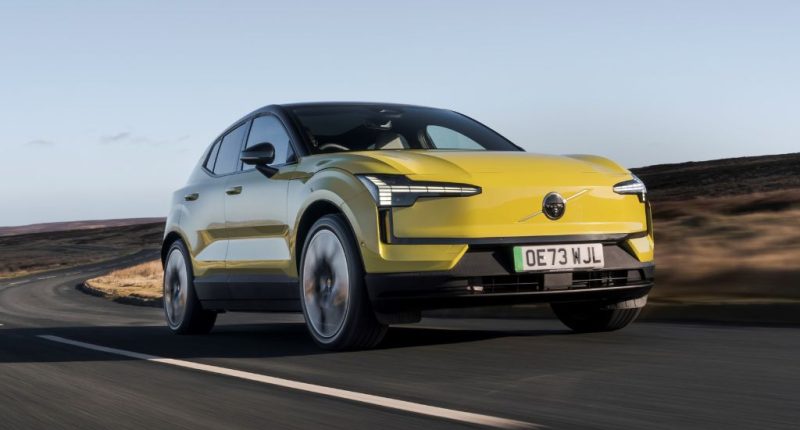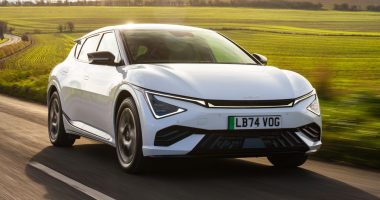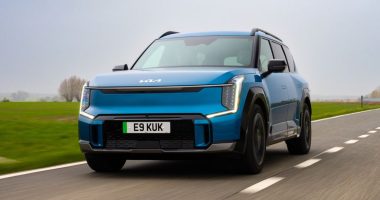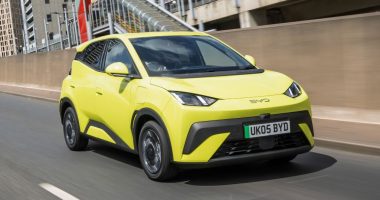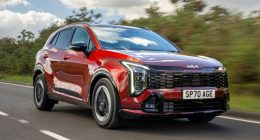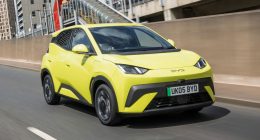Younger, climate-conscious buyers view – and treat – cars like the latest smartphone. In their eyes, it should make life simpler, more enjoyable, and say a little something about who they are. Volvo is also keen to get noticed, especially in the electric vehicle sales war.
So, to persuade buyers to part with their cash, while aiming to hit ever strict emissions regulations and increase profit margins, Volvo is currently pinning its hopes on this: the EX30. Based on a new platform developed with help from parent company Geely to give a choice of two battery sizes, it is the first small Volvo since the Volvo-DAF 300 series.
The range kicks off at £35,500 once the government’s Electric Car Grant is factored in and climbs to over £44,000 before options. Cars can be had in four trim levels – ‘Core’, ‘Plus’, ‘Ultra’ and ‘Cross Country’ – with either a 51kWh or a 69kWh battery. As for motor count, the default is one mounted to the rear axle (268bhp), or for more money you can double up and power the front two wheels as well for a complete power output of 423bhp.
Our ‘Ultra’ car had the single motor in Extended Range Plus guise and promises up to 295-miles on a single charge compared to approximately 214-miles for the standard version although, realistically, you should expect that to drop somewhat in real-world conditions. This trim level has just about everything, including 22kW three-phase charging potential on top of a panoramic glass roof, EV heat pump, and electrically adjustable front seats.
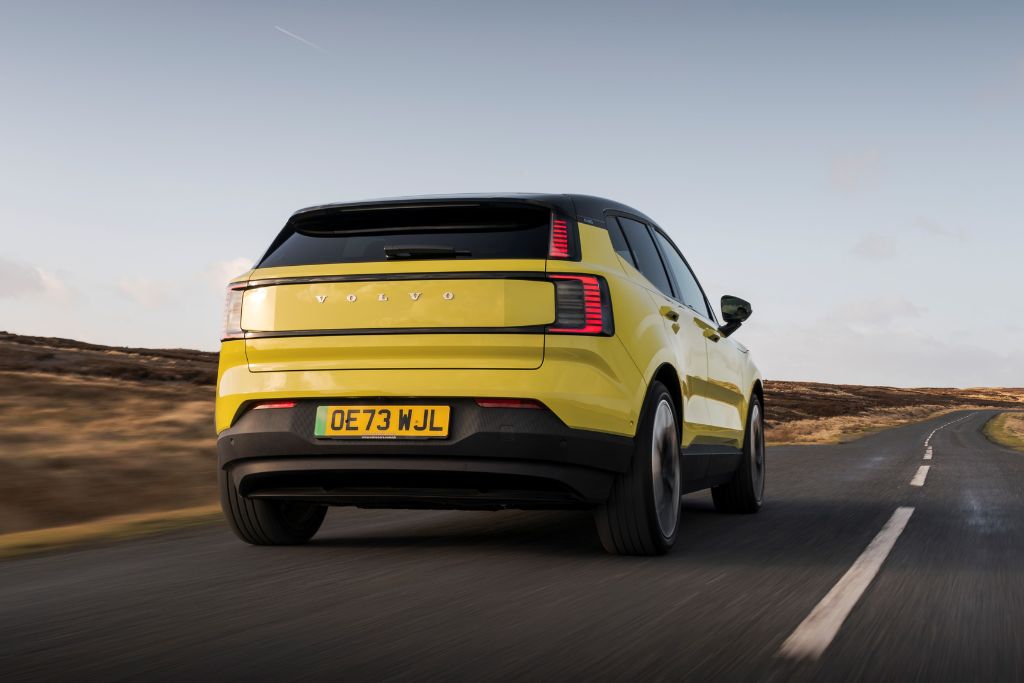
With a maximum 153kW charge rate, in the small battery and Single Motor configuration, a 10-80% top-up can be achieved in half-an-hour. A further two additional minutes are required for the meatier battery in Extended Range and Twin Motor guises, say Volvo. At the other end of the spectrum, an 11kW charge rate can replenish a depleted battery in approximately seven hours, or eight with a dedicated 7kW residential wall box supply.
Even with one motor, the EX30 is not left wanting when it comes to acceleration: officially, you can cover the dash from zero to 62mph in 5.7 seconds, 2.1 seconds down on the dual motor set-up. The suspension is more than up to the job of handling the available power and torque, and despite the hint of body roll at sprightlier speeds, overall, it’s a composed and stable car through corners.
Well-weighted pedals ensure linear acceleration and predictable braking – we just wish the ‘super elliptic’ heated wheel had one less layer of weight to it. That aside, the steering is communicative and brimming with feel and we love how designers have replaced the traditional wiper stalk with a delicate gear selector.
19-inch alloy wheels paired to a firm suspension should spell a recipe for disaster yet this Swedish EV isn’t troubled by potholes, sunken tarmac or bumps at urban speeds. And if you have the misfortune of veering into something that resembles a small crater the only giveaway is the subtle vibration felt through the steering wheel. The seats are some of the most supportive and comfortable we have tested recently, in particular the base area.
The calm drive is experienced from inside a minimalist cabin that is constructed from sturdy materials constructed from earth-friendly recycled plastics that replace the usual leather found in some rival cars. The central dash area, meanwhile, has a strong Tesla look about it, as nearly all the EX30’s functions are made via the 12.3-inch touchscreen.
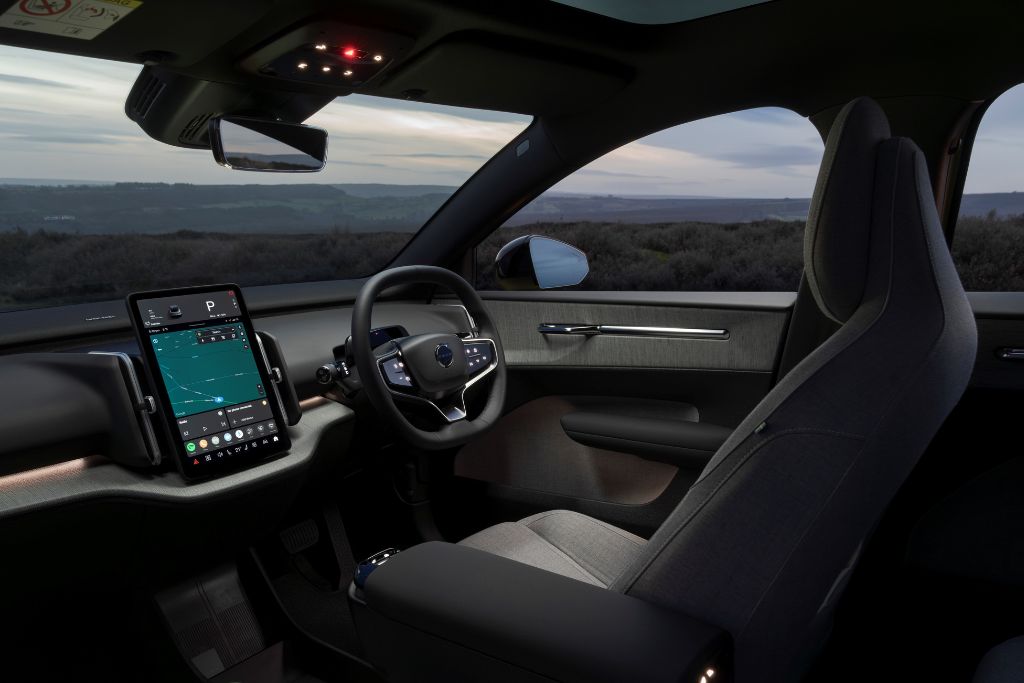
It is not going to appeal to all buyers, however, because the pared back approach comes at a cost in terms of usability – initially, at least. Many of the everyday choice (fan speed, cabin temperature, radio station, sat-nav, even the headlights and wing mirror angle) that can be carried out by the simple press of a button, or the turn of a knob require multiple dabs of a screen that is responsive, bright and – after some time spent on the road – reasonably straightforward to get the hang of.
However, the common complaint of screen heavy cars diverting the driver’s eyes away from what is ahead of you for too long – and too often – applies here. What would help, but is not offered even as an optional extra, is a separate, letter box-shaped driver display like that deployed in Ford’s Mustang Mach E.
Some people might also require time to make their mind up on the EX30’s styling which is in keeping with the current design language coming from Volvo’s HQ in Gothenburg. Bosses are confident it can reverse the previous trend where research shows three out of four young people who would not have seriously considered the brand will now begin to.
Clear Volvo DNA includes the ‘Thor’ hammer LED headlights and high-mounted taillights, and despite being shorter than a Volkswagen Golf, boot volume is still competitive at 318-litres. This rises to 904-litre with the back seats folded out of the way with no space having to be sacrificed for the charge cables as these can be stowed in the useful 19-litre frunk.
There is a downside to having such a small footprint as adults and teenagers are going to find out when travelling in the back of the EX30. A high floor impedes on legroom and feet space, and the tallest passengers can expect to brush against the headlining. Access is fine, yet the underlying impression is a second row intended specifically for youngsters.
